The Blue Rose Echeveria is also known by its scientific name, Echeveria imbricata. This succulent is native to Mexico, where it grows wildly in hot, arid areas.
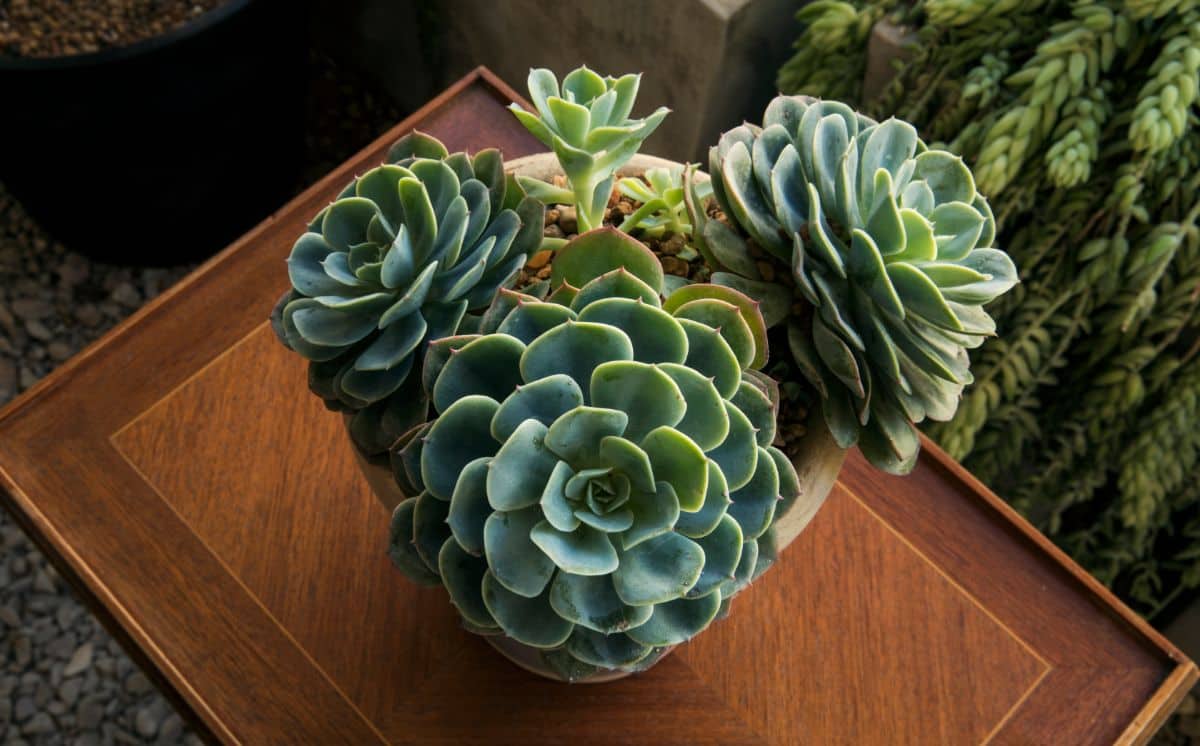
It is an evergreen succulent and is highly popular for its beautiful rosettes and delicate-looking flowers.
The Blue Rose Echeveria usually blooms towards the end of spring and through the summer months, while it is dormant through most of the winter.
Read also: Most Beautiful Blue Succulents
Jump to:
Blue Rose Echeveria Appearance
| Name: | Echeveria imbricata |
| Soil: | Well-drained soil |
| Blooming: | Spring or early summer |
| Light: | Full sun to partial shade |
| Water: | When the soil is completely dry |
| Propagation: | Leaves, offsets or cuttings |
The Blue Rose Echeveria is a strikingly beautiful succulent. It is often used to garnish and decorate food and cakes, because of its unusual colors.
The leaves are large, fleshy and round, coming to a point at the tip. They are green in color, with a blueish tinge. Sometimes the edges of the leaves develop a pink halo as a result of extended exposure to bright sunlight.
You will notice a fine coating of farina on the leaves. This is a white, powdery film that almost seals the leaf, in order to protect it from dehydration.
The leaves grow together to form a tight rosette. The rosettes can become very large, with a diameter of up to 20 inches. They clump together closely, and continually self-propagate, forming new rosettes from offsets that develop. The stems usually reach a height of about 6 inches.
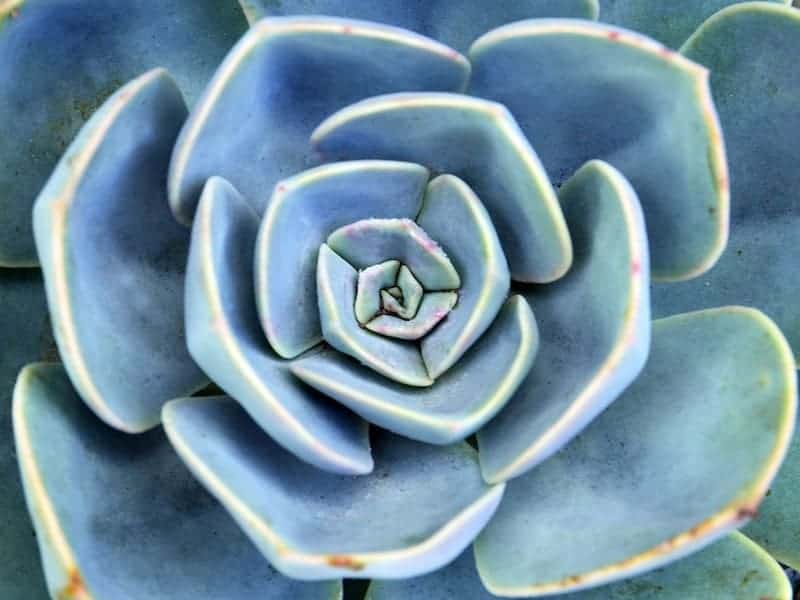
Buy it from:
The Blue Rose Echeveria is one of those species of succulents that have been nicknamed Hen and chicks, because of the way that the new rosettes develop so close to the mother plant, a little like baby chicks huddled close to the mother hen.
This succulent develops a very pretty pink flower and will remain in bloom throughout the summer. It is advisable to keep snipping off the flowers as they die off. This will encourage new growth of fresh blooms.
Caring for the Blue Rose Echeveria
The Blue Rose Echeveria is a highly suitable succulent for those who are beginners at cultivating succulents, as well as those who do not have much time to devote to their plants. It does not require any special attention and will flourish as long as its basic needs of light and water are met.
Light
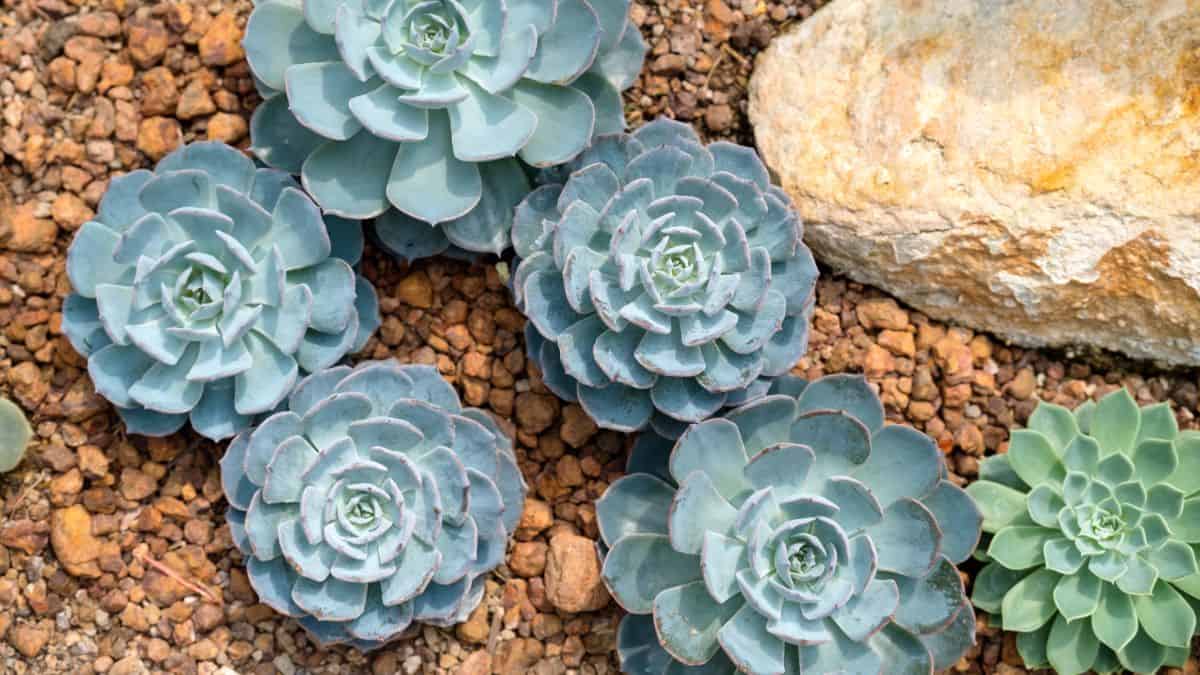
The Blue Rose Echeveria needs a lot of direct sunlight. It should be planted in a spot that gets full sun to partial shade. It needs at least 6 hours of direct sunlight a day.
No products found.
Even though it originates from a hot, arid area, and is used to those conditions, the Blue Rose Echeveria still needs some protection from the very hot afternoon sun in summer.
If it is over-exposed to extremely hot sunlight, it may suffer from sunburn. This will cause damage to the plant, and it can dehydrate. Therefore it should be placed in a position that receives some dappled shade.
If you decide to keep your Blue Rose Echeveria indoors, try to place the pot in a room that gets lots of natural light. If you are in the northern hemisphere, a room with a south-facing window would be best.
If your home does not have sufficient natural light, it is possible to use a grow light. This mimics natural light and is designed for cultivating indoor plants.
Water
The Blue Rose Echeveria is used to very dry conditions, and therefore it does not need a lot of water. It is even able to survive short periods of drought.
When planting this succulent in containers, the container should have adequate drainage holes at the bottom, so that the excess water can run off freely.
When watering your Blue Rose Echeveria, it is advisable to soak it thoroughly and deeply, and then leave it to dry completely. The soil should be totally dry before it is watered again. If the roots are left sitting in constantly damp soil, they will start to rot.
In order to be sure when to water, insert a finger as deep as possible into the soil. It should be dry to the touch. You can also use a wooden skewer. If it is totally dry when it is removed, it is time to water your plant.
Another effective method is to place the container in a dish of water and leave it for a few hours. The soil will absorb the water through the holes at the bottom, and the roots will suck up as much as they need. The pot should not be left standing in water indefinitely. This will result in overwatering,
Temperature
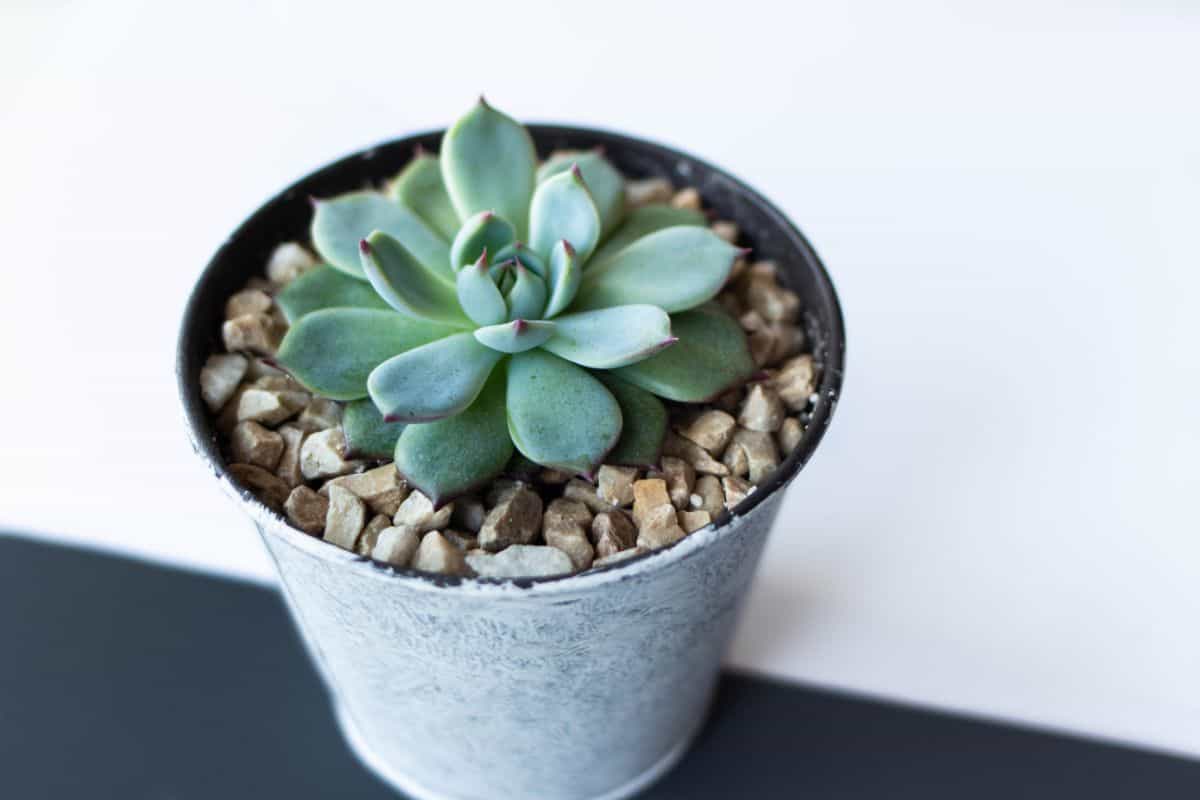
The Blue Rose Echeveria loves warmth and will thrive in fairly hot conditions. It is not very hardy as far as cold is concerned. It cannot survive exposure to temperatures below 20° Fahrenheit.
If you live in a zone with a mild climate, it is fine to cultivate your Blue Rose Echeveria in outdoor beds. However, if temperatures regularly drop below 20°, it is preferable to plant your succulents in containers that can be taken inside when it gets very cold.
The Blue Rose Echeveria will not do well if it is exposed to frost. If frost is expected, it should either be covered lightly to protect it, or it should be placed under shelter or taken indoors.
If your Blue Rose Echeveria lives inside, find a spot for it in a warm room with a constant temperature. It does not like sudden drastic changes in temperature.
See Related Topic: Echeveria Dondo - A Care Guide
Soil
When planting the Blue Rose Echeveria, it is crucial that the soil has excellent drainage. One of the biggest enemies of succulents is excessive water. The container should have good drainage holes at the bottom.
When preparing the soil, it is recommended to use a half-and-half mixture of cactus potting soil, and mineral grit. The mineral grit should contain coarse sand and either perlite or pumice or even a combination of all 3 elements. This will allow for sufficient drainage.
Propagating the Blue Rose Echeveria
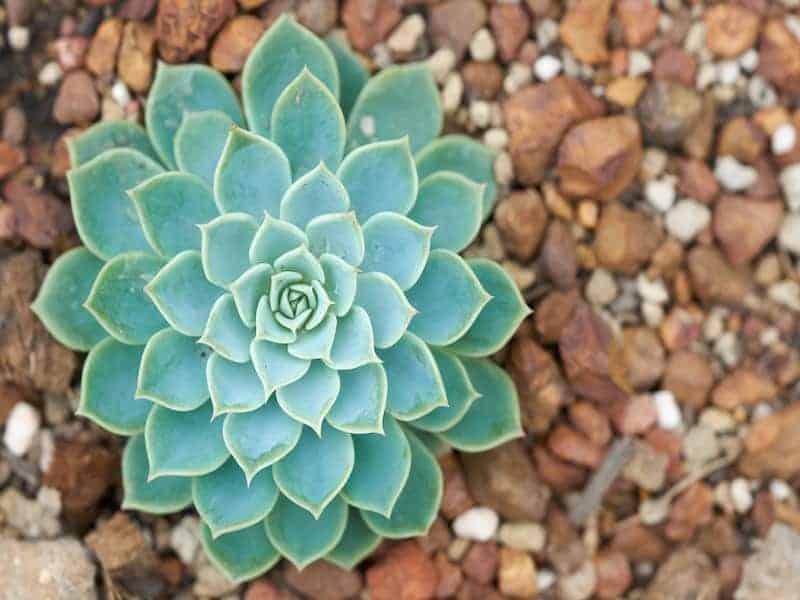
The Blue Rose Echeveria is easy to propagate. This can be done from leaves, offsets or cuttings.
Propagating from leaves
Carefully remove a few leaves, close to the stem. Place them in a dish on top of a layer of soil, and water lightly every few days. As soon as they start sprouting shoots, they can be planted in a pot of soil.
Propagating from offsets
Cut the offset from the mother plant, making sure to remove the roots. Repot in a new container and water lightly. It shouldn’t take long to regenerate and develop into a healthy plant.
Propagating from cuttings
Cut off a piece, as close to the base of the stem as possible. Allow it to dry for a few days until a callous has formed. Once it has calloused over, it can be planted in a pot of soil. Water lightly every few days until the plant is looking healthy and is growing well. The watering schedule can then be reduced.
You May Also Like: Echeveria Arctic Ice Succulent Care Guide
Common Problems and Pests
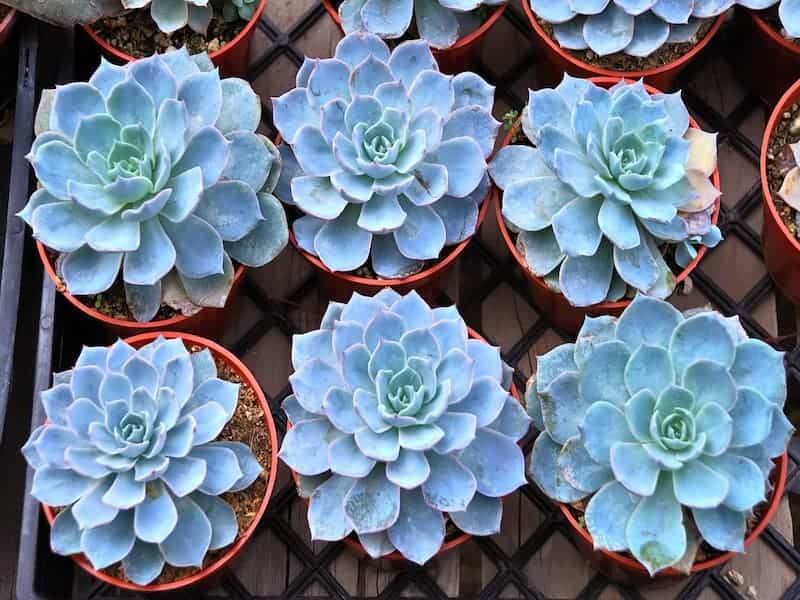
Overwatering
Overwatering is very harmful to the Blue Rose Echeveria. If the leaves start to turn brown and are soft and mushy, it means the roots are rotting from being permanently wet.
Bugs
Mealybug infestation is common in the Blue Rose Echeveria. You will notice a fine, white coating of web-like filaments, before seeing the actual insects.
The insects themselves are tiny dots, which hide in the folds at the base of the leaf. They multiply rapidly and need to be eliminated in order to save the plant. The best treatment is a chemical pesticide, available from your local nursery.
Sources:
https://mountaincrestgardens.com/echeveria-imbricata-blue-rose-limited/
https://worldofsucculents.com/echeveria-x-imbricata-blue-rose-echeveria-hens-and-chicks/


